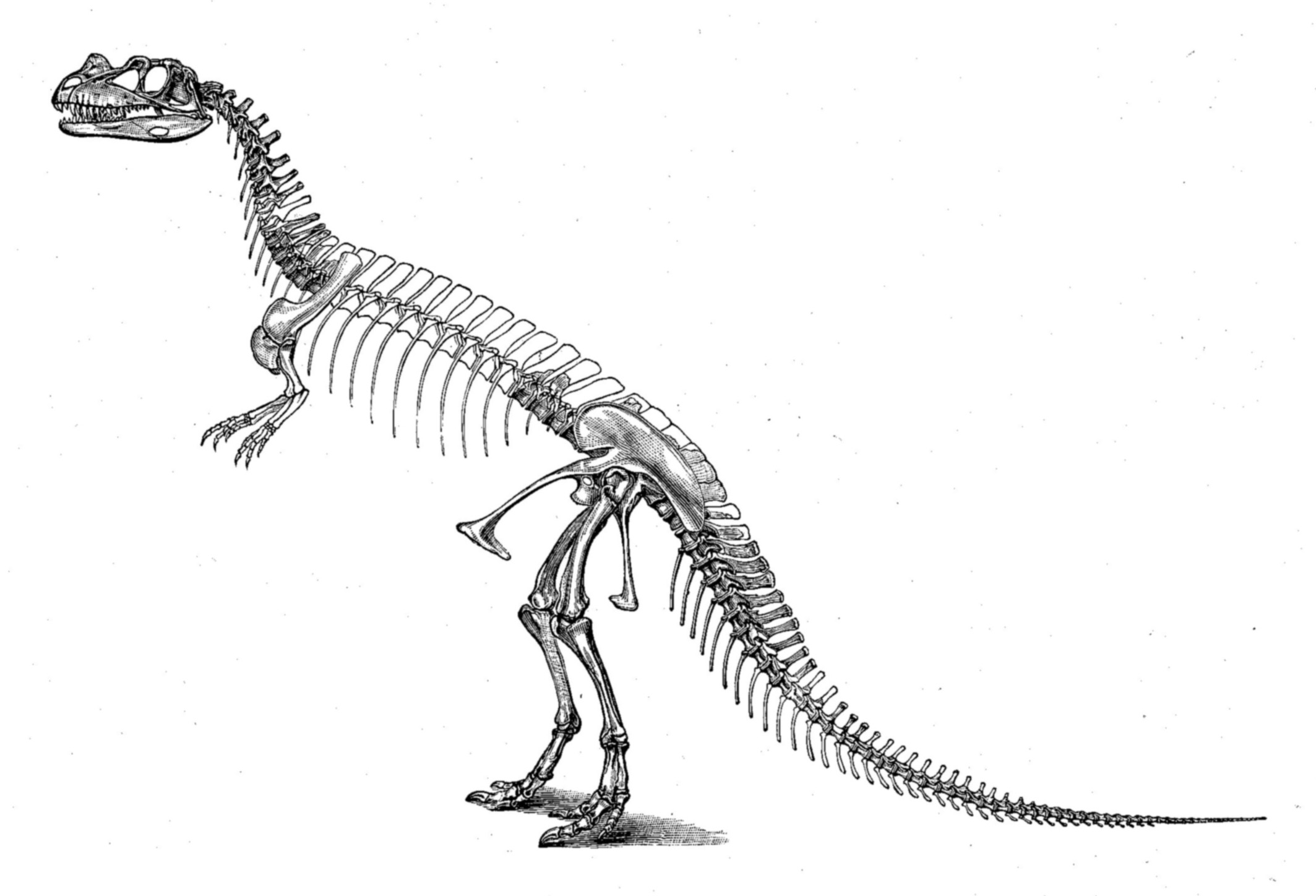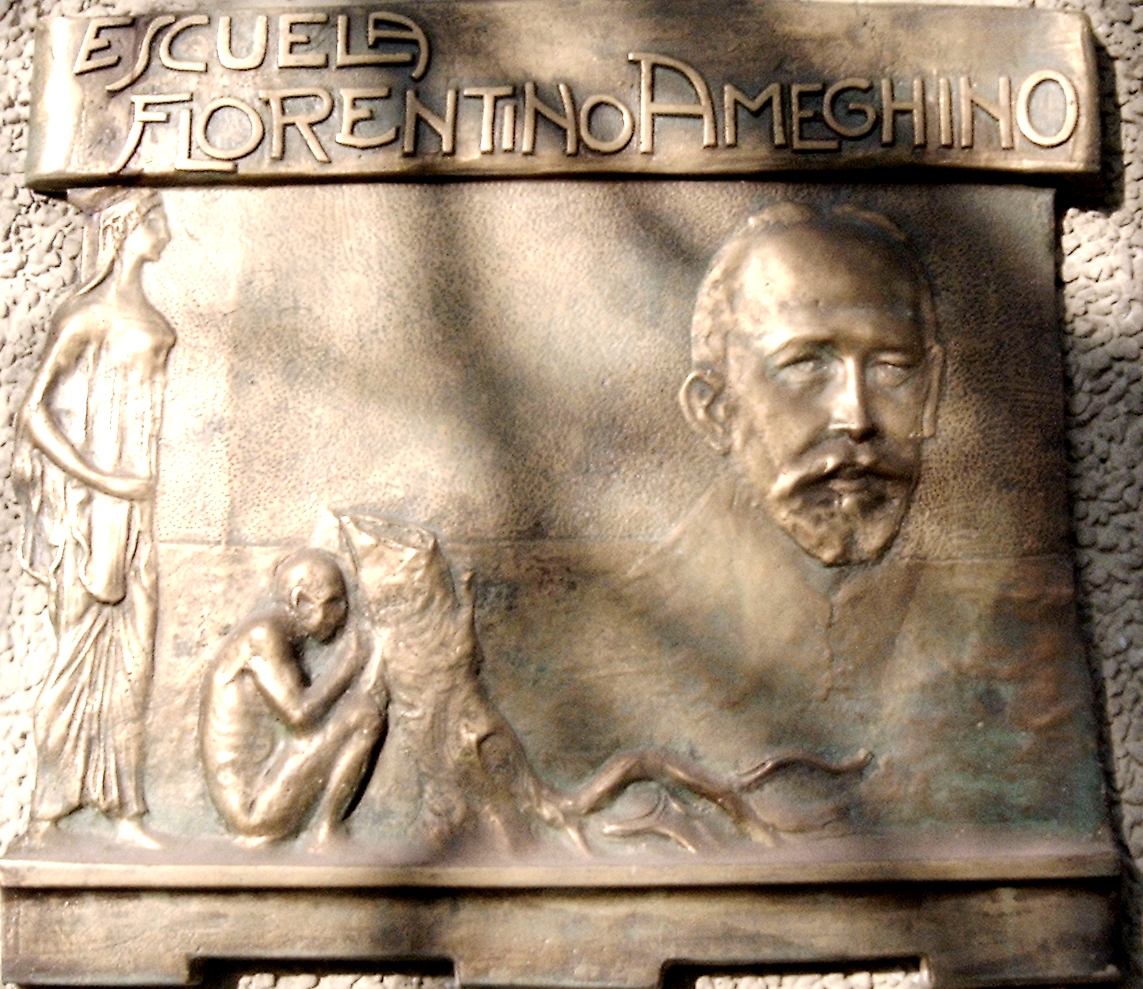|
Genyodectes
''Genyodectes'' ("jaw bite", from the Greek words ''genys'' ("jaw") and ''dektes'' ("bite")) is a genus of ceratosaurian theropod dinosaur from the Lower Cretaceous (Aptian) of South America. The holotype material (MLP 26–39, Museo de La Plata, La Plata, Argentina) was collected from the Cerro Barcino Formation, Cañadón Grande, Departamento Paso de Indios in the Chubut Province of Argentina and consists of an incomplete snout, including the premaxillae, portions of both maxillas, the right and left dentary, many teeth, a fragment of the left splenial, and parts of the supradentaries. These elements are generally poorly preserved and some are in articulation. The premaxilla of ''Genyodectes'' possesses relatively large and protruding teeth, similar to those of ''Ceratosaurus''. The specific name, ''serus'', means "late". In 2016 it was estimated to be in length and in weight. Taxonomy and phylogeny The taxon has long been considered a nomen dubium, owing to its fragmentary ... [...More Info...] [...Related Items...] OR: [Wikipedia] [Google] [Baidu] |
Ceratosaurus
''Ceratosaurus'' (from Greek 'horn' and 'lizard') is a genus of carnivorous theropod dinosaur that lived in the Late Jurassic period (Kimmeridgian to Tithonian ages). The genus was first described in 1884 by American paleontologist Othniel Charles Marsh based on a nearly complete skeleton discovered in Garden Park, Colorado, in rocks belonging to the Morrison Formation. The type species is ''Ceratosaurus nasicornis''. The Garden Park specimen remains the most complete skeleton known from the genus and only a handful of additional specimens have been described since. Two additional species, ''Ceratosaurus dentisulcatus'' and ''Ceratosaurus magnicornis'', were described in 2000 from two fragmentary skeletons from the Cleveland-Lloyd Quarry of Utah and from the vicinity of Fruita, Colorado. The validity of these additional species has been questioned, however, and all three skeletons possibly represent different growth stages of the same species. In 1999, the discovery o ... [...More Info...] [...Related Items...] OR: [Wikipedia] [Google] [Baidu] |
Ceratosaur
Ceratosaurs are members of the clade Ceratosauria, a group of dinosaurs defined as all theropods sharing a more recent common ancestor with ''Ceratosaurus'' than with birds. The oldest known ceratosaur, ''Saltriovenator'', dates to the earliest part of the Jurassic, around 199 million years ago. Ceratosauria includes three major clades: Ceratosauridae, Noasauridae, and Abelisauridae, found primarily (though not exclusively) in the Southern Hemisphere. Originally, Ceratosauria included the above dinosaurs plus the Late Triassic to Early Jurassic Coelophysoidea and Dilophosauridae, implying a much earlier divergence of ceratosaurs from other theropods. However, most recent studies have shown that coelophysoids and dilophosaurids do not form a natural group with other ceratosaurs, and are excluded from this group. Ceratosauria derives its names from the type species, ''Ceratosaurus nasicornis'', described by O.C. Marsh in 1884. A moderately large predator from the Late Jurassic, ... [...More Info...] [...Related Items...] OR: [Wikipedia] [Google] [Baidu] |
Cerro Barcino Formation
The Cerro Barcino Formation (also known as the Gorro Frigio Formation) is a geological Formation (geology), formation in South America whose strata span the Early Cretaceous to the earliest Late Cretaceous. The top age for the formation has been estimated to be Cenomanian. Earlier estimates placed the formation until the Campanian. The formation was deposited in the Cañadón Asfalto Basin, a rift basin that started forming in the earliest Jurassic. Dinosaur remains are among the fossils that have been recovered from the formation. The Cerro Barcino Formation is the second-youngest unit of the Chubut Group, which also includes the older Los Adobes Formation. Both formations cover a vast area in Chubut Province, Argentina. The two formations are distinguished by geological features suggesting a distinct change in climate, from a wetter, flood plain environment in the Los Adobes to a much more arid, desert-like environment in the Cerro Barcino.Rauhut et al., 2003 The Cerro Barcino ... [...More Info...] [...Related Items...] OR: [Wikipedia] [Google] [Baidu] |
Loncosaurus Argentinus
''Loncosaurus'' (meaning uncertain; either Araucanian "chief" or Greek "lance" "lizard"Norman, D.B., and Weishampel, D.B. 1990. Iguanodontidae and related ornithopods. In: Weishampel, D.B., Dodson, P., and Osmólska, H. (eds.). ''The Dinosauria''. University of California Press:Berkeley, 510-533. Norman, D.B. 2004. Basal Iguanodontia. In: Weishampel, D.B., Dodson, P., and Osmólska, H. (eds.). ''The Dinosauria'' (second edition). University of California Press:Berkeley, 413-437. George Olshevsky'Dinosaur Genera List/ref> Ameghino, F. 1899. Nota preliminar sobre el ''Loncosaurus argentinus'', un representante de la familia Megalosauridae de la República Argentina. ''Anales de la Sociedad Cientifica Argentina'' 49:61-62. panish/ref>Coria, R.A., and Salgado, L. 1996. ''Loncosaurus argentinus'' Ameghino, 1899 (Ornithischia, Ornithopoda): a revised description with comments on its phylogenetic relationships. ''Ameghiniana'' 33(4):373-376.Glut, D.F. (1997). ''Dinosaurs: The Encycl ... [...More Info...] [...Related Items...] OR: [Wikipedia] [Google] [Baidu] |
Meiolania
''Meiolania'' is an extinct genus of meiolaniid stem-turtle native to Australasia throughout much of the Cenozoic. ''Meiolania'' was a large turtle, with the shell alone ranging from in length. Four species are currently recognized, although the validity of two of them is disputed. ''Meiolania'' was first described as a species of lizard related to '' Megalania'' by Richard Owen towards the end of the 19th century, before the continued discovery of additional fossils solidified its placement as a kind of turtle. The best known species is ''M. platyceps'', known from hundreds of specimens collected in Pleistocene strata of Lord Howe Island. The oldest known species is ''M. brevicollis'' from the Miocene of mainland Australia. Other species include ''M. mackayi'' from Pleistocene New Caledonia, which may be synonymous with ''M. platyceps'', ''? M. damelipi'' from Holocene Vanuatu, which may represent a non-meiolaniid turtle, and the Wyandotte species, an unnamed form from Pleistoce ... [...More Info...] [...Related Items...] OR: [Wikipedia] [Google] [Baidu] |
Early Cretaceous
The Early Cretaceous (geochronology, geochronological name) or the Lower Cretaceous (chronostratigraphy, chronostratigraphic name) is the earlier or lower of the two major divisions of the Cretaceous. It is usually considered to stretch from 143.1 Megaannum#SI prefix multipliers, Ma to 100.5 Ma. Geology Proposals for the exact age of the Barremian–Aptian boundary ranged from 126 to 117 Ma until recently (as of 2019), but based on drillholes in Svalbard the defining Anoxic event#Cretaceous, early Aptian Oceanic Anoxic Event 1a (OAE1a) was dated to 123.1±0.3 Ma, limiting the possible range for the boundary to c. 122–121 Ma. There is a possible link between this anoxic event and a series of Early Cretaceous large igneous provinces (LIP). The Ontong Java Plateau, Ontong Java-Manihiki Plateau, Manihiki-Hikurangi Plateau, Hikurangi large igneous province, emplaced in the South Pacific at c. 120 Ma, is by far the largest LIP in Earth's history. The Onto ... [...More Info...] [...Related Items...] OR: [Wikipedia] [Google] [Baidu] |
Bird
Birds are a group of warm-blooded vertebrates constituting the class (biology), class Aves (), characterised by feathers, toothless beaked jaws, the Oviparity, laying of Eggshell, hard-shelled eggs, a high Metabolism, metabolic rate, a four-chambered heart, and a strong yet lightweight Bird skeleton, skeleton. Birds live worldwide and range in size from the bee hummingbird to the common ostrich. There are over 11,000 living species and they are split into 44 Order (biology), orders. More than half are passerine or "perching" birds. Birds have Bird wing, wings whose development varies according to species; the only known groups without wings are the extinct moa and elephant birds. Wings, which are modified forelimbs, gave birds the ability to fly, although further evolution has led to the Flightless bird, loss of flight in some birds, including ratites, penguins, and diverse endemism, endemic island species. The digestive and respiratory systems of birds are also uniquely a ... [...More Info...] [...Related Items...] OR: [Wikipedia] [Google] [Baidu] |
Florentino Ameghino
Florentino Ameghino (born Giovanni Battista Fiorino Giuseppe Ameghino; September 19, 1853 – August 6, 1911) was an Argentine naturalist, paleontologist, anthropologist and zoologist, whose fossil discoveries on the Argentine Pampas, especially on Patagonia, rank with those made in the western United States during the late 19th century. Along with his two brothers – Carlos and Juan – Florentino Ameghino was one of the most important founding figures in South American paleontology. From 1887 until his death, Ameghino was passionately devoted to the study of fossil mammals from Patagonia, with the valuable support of his brother Carlos Ameghino (1865–1936) who, between 1887 and 1902, made 14 trips to that region, where he discovered and collected numerous fossil faunas and made important stratigraphic observations. Biography Ameghino was born on September 19, 1853, in Tessi, an hamlet of Moneglia, a municipality of Liguria in Italy, in what was then the Kingdom of Sardi ... [...More Info...] [...Related Items...] OR: [Wikipedia] [Google] [Baidu] |
Dinilysia
''Dinilysia'' (meaning "terrible ilysia") is an extinct genus of snake from the Late Cretaceous (Coniacian) of South America. ''Dinilysia'' was a relatively large ambush predator, measuring approximately long. The skull morphology of ''Dinilysia'' is similar to Boidae, boids, suggesting that it was able to consume large prey. Living in a desert-like environment, ''Dinilysia'' is likely a terrestrial or a semi-fossorial animal. Physiology and lineage The ''Dinilysia patagonica'' is a stem snake that is very closely related to the original ancestor of the clade of crown snakes. Once the fossil of the snake was discovered, an x-ray computed tomography was used to build a digitized endocast of its inner ear. The results displayed that the ''Dinilysia patagonica'''s inner ear anatomy had three main parts. It had a large spherical vestibule, large foramen ovale, and slender semicircular canals in its inner ear. Especially significantly, the spherical vestibule is an inne ... [...More Info...] [...Related Items...] OR: [Wikipedia] [Google] [Baidu] |
Paleontologist
Paleontology, also spelled as palaeontology or palæontology, is the scientific study of the life of the past, mainly but not exclusively through the study of fossils. Paleontologists use fossils as a means to classify organisms, measure geologic time, and assess the interactions between prehistoric organisms and their natural environment. While paleontological observations are known from at least the 6th century BC, the foundation of paleontology as a science dates back to the work of Georges Cuvier in 1796. Cuvier demonstrated evidence for the concept of extinction and how life of the past was not necessarily the same as that of the present. The field developed rapidly over the course of the following decades, and the French word ''paléontologie'' was introduced for the study in 1822, which was derived from the Ancient Greek word for "ancient" and words describing relatedness and a field of study. Further advances in the field accompanied the work of Charles Darwin who popu ... [...More Info...] [...Related Items...] OR: [Wikipedia] [Google] [Baidu] |







